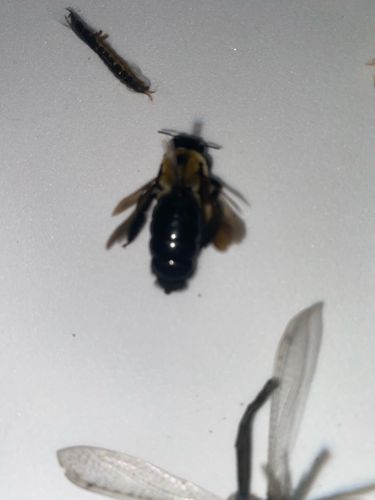Carpenter Bee
Scientific Name: Xylocopa (likely Xylocopa virginica in North America)
Order & Family: Hymenoptera, Apidae
Size: 20-25 mm (0.8-1.0 inch) in length

Natural Habitat
Woody areas, suburban gardens, forests, near wooden structures like eaves, decks, and fences. They prefer soft, unpainted wood for nesting.
Diet & Feeding
Nectar and pollen from various flowering plants. They are important pollinators.
Behavior Patterns
Solitary bees, meaning they do not live in colonies like honey bees, though several females may nest in close proximity. Females bore tunnels into wood to create brood chambers for their eggs. They are often seen hovering around eaves or wooden structures. Males can be territorial and aggressive but lack a stinger.
Risks & Benefits
Potential risks: Females can sting if provoked, but they are not typically aggressive. Their tunneling behavior can cause cosmetic and structural damage to wooden structures over time. Benefits: Carpenter bees are important pollinators for many wild and cultivated plants, contributing to ecosystem health and agricultural yields.
Identified on: 9/17/2025